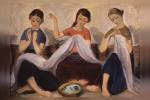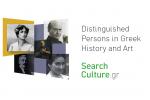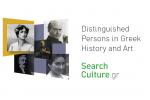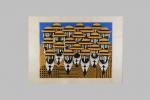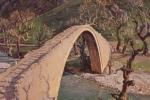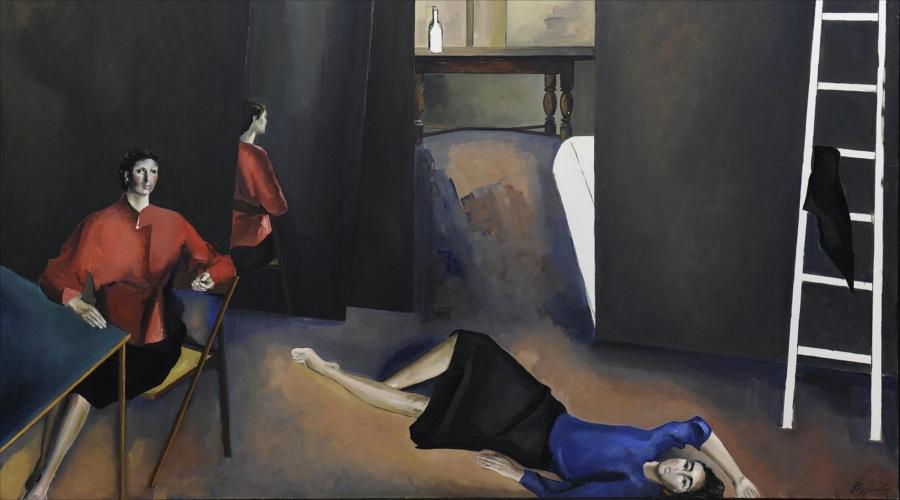
'Art is a refuge', 'art is a way of survival, 'art is healing'. These are just some of the claims made about the value of art. In response to the increased need for digital access to quality content, a significant volume of art by Greek and foreign artists has been made available in the National Documentation Centre ‘s (EKT) SearchCulture.gr, the Greek national cultural content aggregator.
In difficult times like today, art can relieve, inspire, offer healing, refuge and transform reality, even if this reality is (voluntary or involuntary) confinement. Highlighted below, are examples of works featured in the thematic exhibition 'The Great Indoors' on SearchCulture.gr. Here, you will discover works by Greek painters who, each in their own way and within the artistic realities of their time, explore their relationship with the 'indoors'.
Home, our domicile, can mean different and conflicting things, even to the same person. Cosiness, family, comfort, but also loneliness, tension, sadness or claustrophobia. For artists, it is perhaps a keyhole, a window into the world of others, but also an inspiration for artistic commentary on man's relationship with everyday objects. As Gaston Bachelard suggested in 1858 in his book 'La Poétique de l'Espace' (The Poetics of Space), our homes, from the sanctuary of the bedroom to the view from the window, the objects and our routines are inextricably linked to our experiences, how we see the 'inside' and the 'outside', the private and the public.
Nikiforos Lytras in Cairo
In 1879, Nikiforos Lytras travelled to Egypt. It was the second time that the artist had travelled in the Near East for inspiration, which was the trend for Orientalist artists, particularly the French and the Germans. Having studied at the Academy of Munich, Nikiforos Lytras was of course closer to German orientalism.
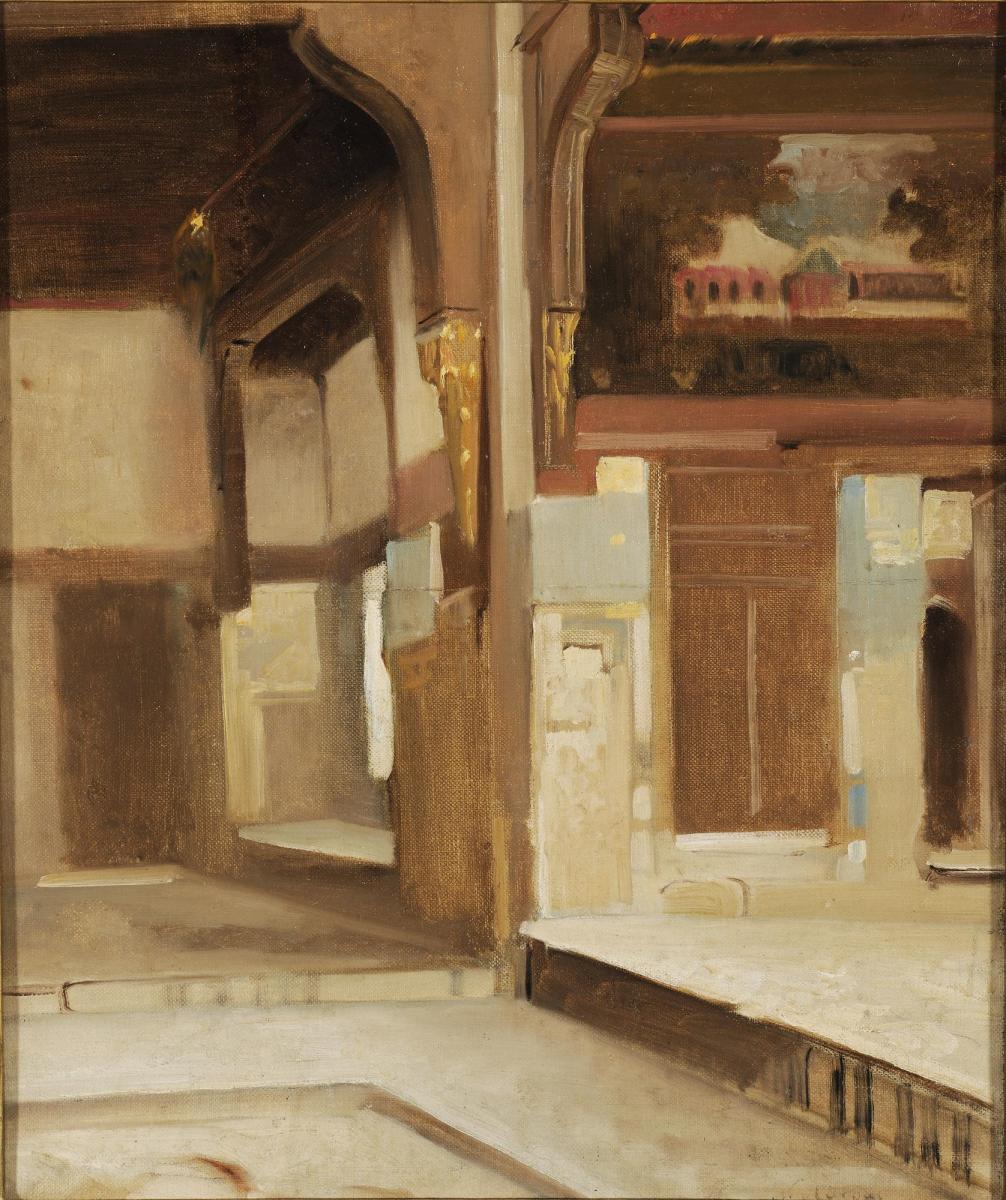
Nikiforos Lytras, House Interior - (License: CC BY-NC-ND 4.0 GR)
This unfinished oil painting depicts the interior of Ismail Pasha's mansion, called Musafir Khana Palace. A rare example of a middle-class residence in Ottoman Cairo, it hosted famous writers and artists of the time and was often depicted by them. Unfortunately, it burned down 22 years ago, but sketches and works like this will help conservators with its restoration.
In 'House Interior’ Lytras makes a study in light and colour, inspired by the Near East, while the orientalist elements of his painting are evident, even though more restrained than in those of French orientalism, due to his German education. The work is available at SearchCulture.gr from the National Gallery and Museum of Alexandros Soutsos and is on display at the Corfu Branch.
Umberto Argyros in Munich
Argyros was an Impressionist painter, a student of Lytras at the Athens School of Fine Arts and later a professor of many well-known artists such as Kaniaris, Moralis, Nikolaou and others.
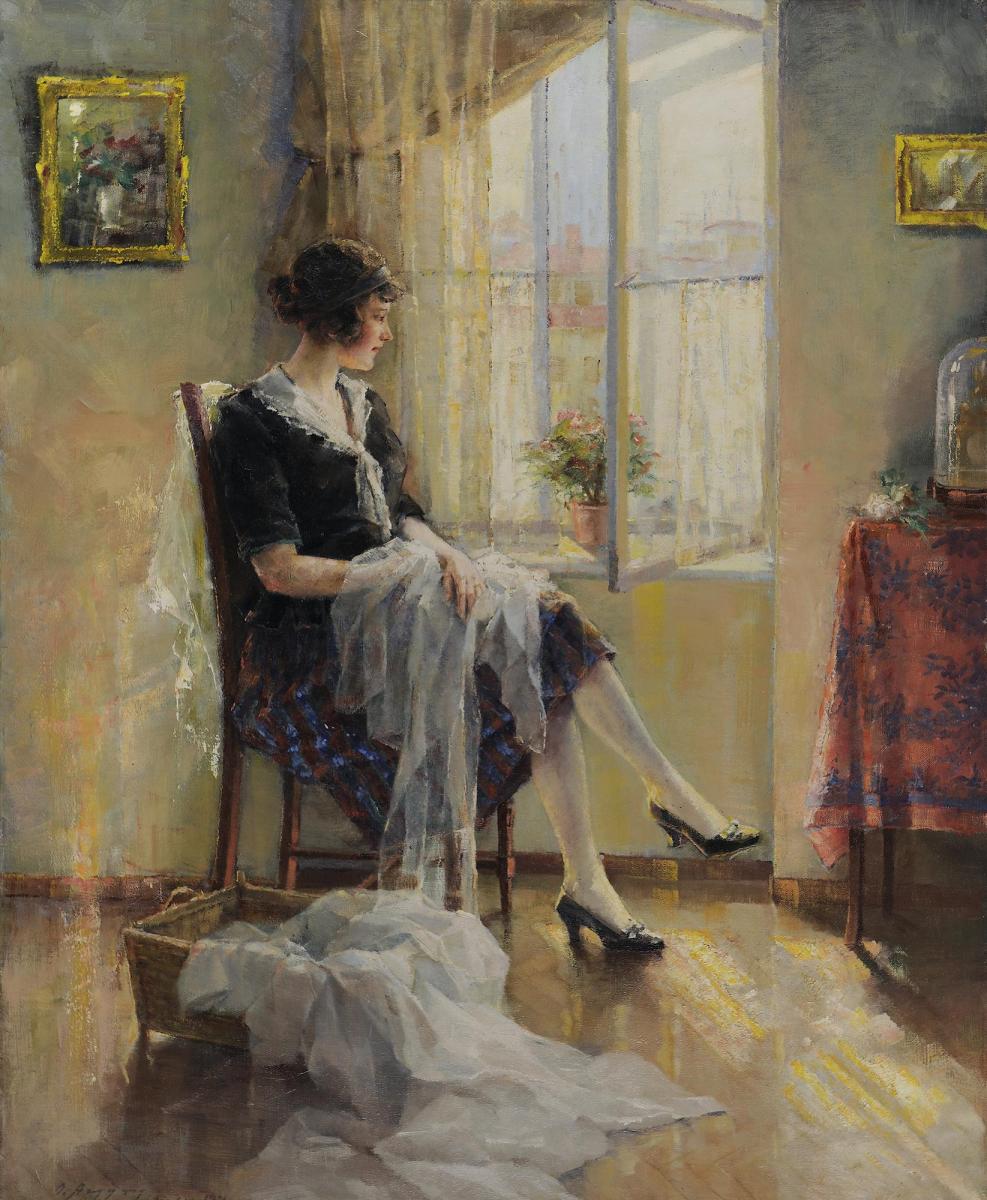
Umberto Argyros, Woman by the window - (License CC BY-NC-ND 4.0 GR)
In 'Woman by the window ', the characteristics of Impressionism are evident: rapid brushstrokes broken into separate dabs, vivid colours, emphasis on the play of light. The subject is simple: a girl who has momentarily abandoned her needlework to stare distractedly out the window. Argyros captures the moment, or rather the impression of the moment where the light makes everything in the room pulsate, the glaze on the wooden floor almost seems to liquefy and the girl, bathed in the light from the window, flickers. The houses seen through the window look German, the work having been painted in 1826, a few years before the painter returned to Greece from Munich.
The work is available at SearchCulture.gr from the National Gallery and Museum of Alexandros Soutsos.
Bourgeois women in the work of Pericles Pantazis
Pericles Pantazis was one of the first Greek Impressionist painters and one of the pioneers of the genre in Belgium, where he spent most of his life.
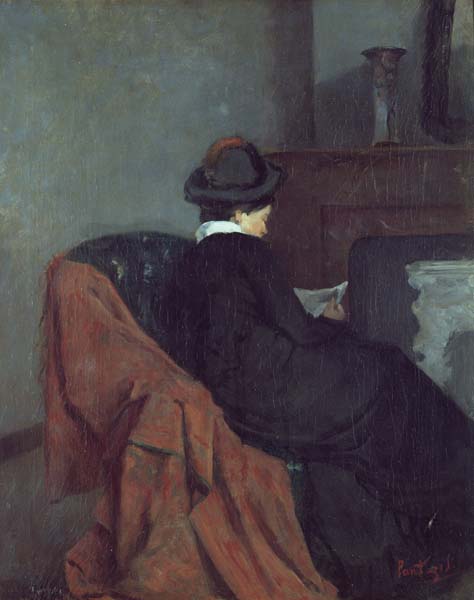
Pericles Pantazi, Lady in riding costume - (License CC BY-NC 4.0)
A student of Gustave Courbet, Pantazis often paints female figures and not always the statuesque peasant women that his teacher liked to paint. The female figure in the work of Pericles Pantazis is more sombre: the well-dressed lady of the city, sometimes in a secluded corner of a garden and sometimes in the familiar space of a room, like the woman in the 'Lady in riding costume. The woman’s figure emerges through successively applied dabs of dark paint in flat, broad monochrome strokes in the manner of Manet, minimizing the chromatic transitions in order to render volume. In contrast, the dark red fabric in the foreground, with its deep, rich folds, contributes to the sense of three-dimensionality and the definition of depth.
The work is available at SearchCulture.gr from the National Gallery and Museum of Alexandros Soutsos.
The 10 compositions of Giannis Moralis for the Poems of George Seferis
“I don’t know much about houses
I know they have their own nature, nothing else.
New at first, like babies
who play in gardens with the tassels of the sun,
they embroider coloured shutters and shining doors
over the day.
When the architect’s finished, they change,
they frown or smile or even grow resentful
with those who stayed behind, with those who went away
with others who’d come back if they could
or others who disappeared, now that the world’s become
an endless hotel.”
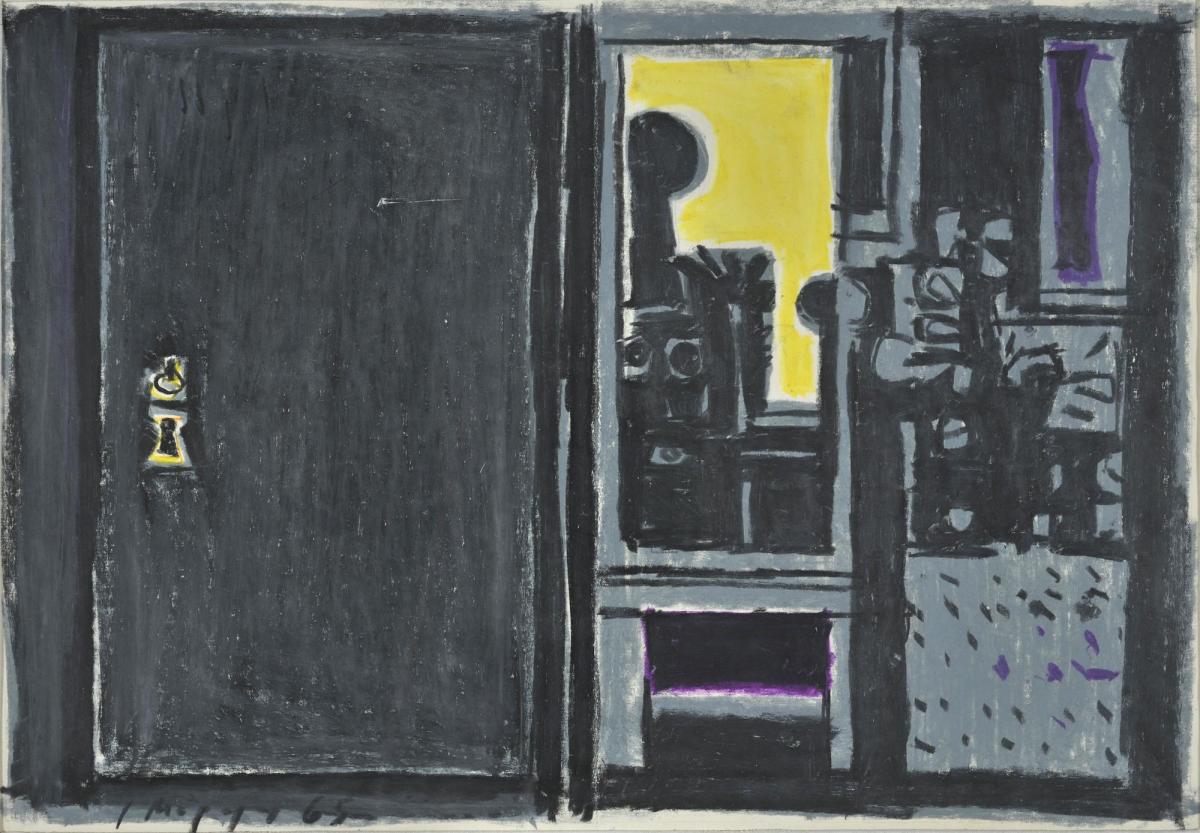
Giannis Moralis, (Ikaros publications) - (License CC BY-NC-ND 4.0 GR)
Seferis initially expressed hesitation when Ikaros publications invited Giannis Moralis to illustrate his poems in 1965. But when he saw the 10 small compositions, crayon on paper, rendered with freedom, narrative mood and intense geometry, he changed his mind: 'I saw his images as a counterpoint , a different scale, more spontaneous, fresher than the literature around us usually gives birth to. These paintings made me pay attention to them; those grey, blue and black bright colours ".
And indeed, the poet aptly summed up what the artist became known for: his beautiful blacks. The colour range is limited to black and grey, yellow, the blue-purple of the evening sky, a little chalky white. Every hint of shading is removed, the colour is flat, execution is fast in the expressionist style and coloured surfaces are rough. The outside is bathed in what critics call the 'fluffy light' of Moralis, which absorbs reflections, while the objects are depthless, as in red-figured pottery or grave stelae. The work manages to combine european modernism with a deep-rooted, modest indigenous style.
The work is available at SearchCulture.gr from the National Gallery and Museum of Alexandros Soutsos.
The young Hatzikyriakos - Ghikas in Paris
In 1927 Nikos Hatzikyriakos - Gikas, at the age of 21, painted 'The Open Door'. At that time he was living in Paris, working on his first solo exhibition and preparing for the next decade of his life, which, without even knowing it, would be a decade of exceptional creativity, success and recognition..
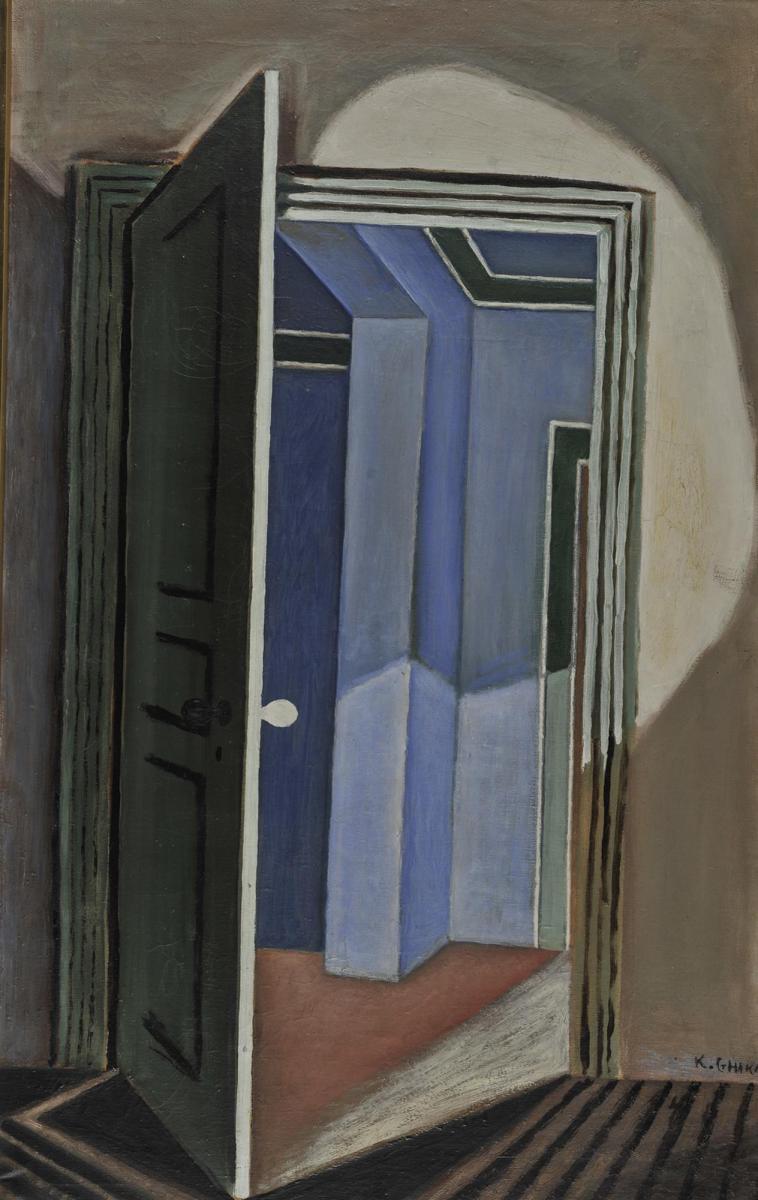
Nikos Hatzikyriakos - Gikas, The Open Door - (License CC BY-NC-ND 4.0 GR)
The open door that invites the viewer to come into the light is perhaps a metaphor for the possibilities that lay ahead for the young artist in the city of light, his impatience for the future and all the possible directions that this can take. He is not very interested in the interior of the space - he is fascinated by the outside: the light and the corridor branching out ahead, the exit. He paints the space rhythmically, architecturally, on levels, presenting it methodically in geometric shapes. His meticulous attention to the composition and his devotion to the study of space are characteristic of the approach of the artist, a multi-talented renaissance man who contributed significantly to the transition of Greek art to modernism.
Angelos Prokopiou, an art critic of the time, commenting on Ghika's work on the relationship between modernism and Greek art, wrote: 'Keeping the architectural and rhythmic composition that cubist rationalism dictates, the game of balancing volumes and colour values, the stylisation of the figures and the music of the local colours, Hatzikyriakos - Ghikas gets to the tradition of Ancient Greek Art via the route of living, breathing folk Greek culture”.
The work is available at SearchCulture.gr from the National Gallery and Museum of Alexandros Soutsos.
Dikos Byzantios, a painter of the Greek Diaspora
Dikos (Konstantinos) Byzantios, son of the Constantinople-born painter Pericles Byzantios, is a recognized painter of the Diaspora. In 1945, with the outbreak of the Civil War in Greece, he was the youngest of the two hundred Greek artists and scientists, scholars of the French state, who fled to Paris on the legendary 'Mataroa' ship, alongside famous intellectuals such as Kastoriadis, Axelos, Svoronos, etc.
In Paris, which was to become his other home, his artist circle, artists such as Giacometti, Poliakov and Soulaz infuse his artistic vocabulary with elements of abstration, while Foucault and Ionesco love his work and write about his exhibitions. The enigmatic atmosphere of his works fascinated Ionesco: 'The universe of this painting is spiritual, it balances between composition and movement contrastingly, it is born through the silence that surrounds it, while resisting it and presenting it to us."
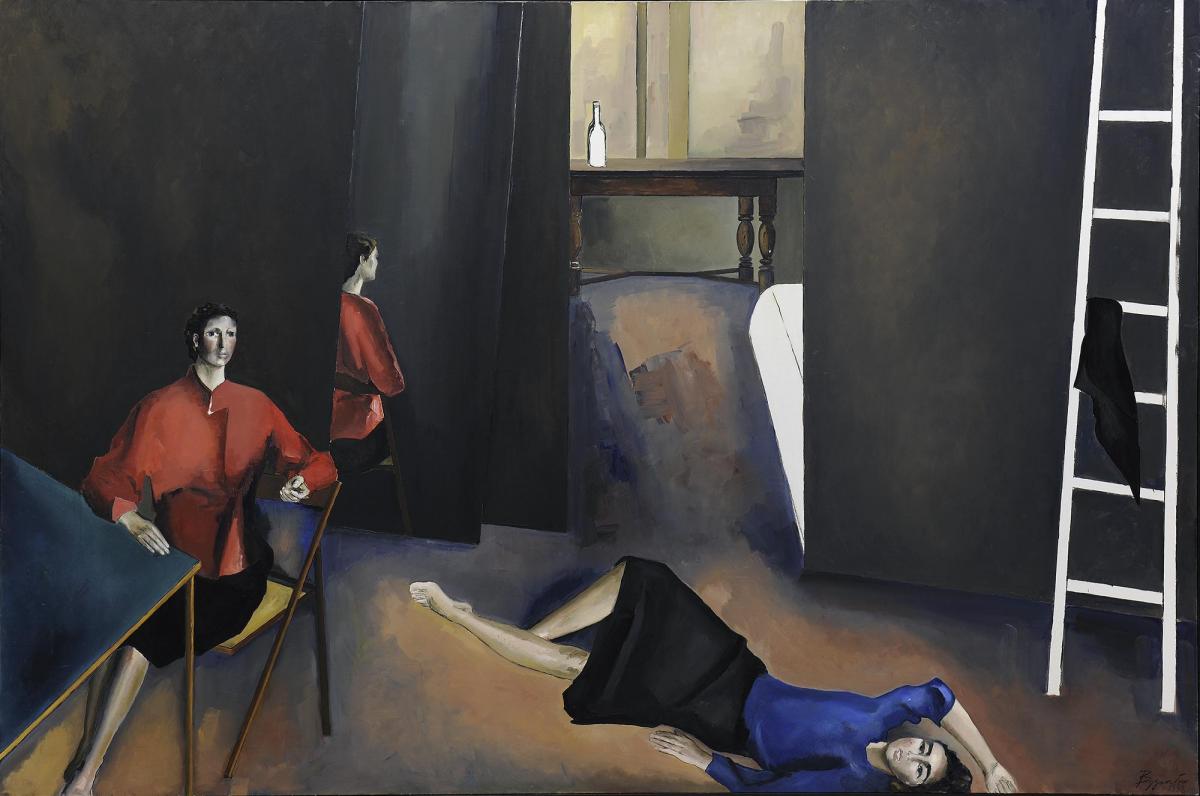
Dikos (Konstantinos) Byzantios, Figures - (License CC BY-NC-ND 4.0 GR)
'Figures” is from the third period of Byzantios’ works, from 1981 until the end of his life. Abandoning the abstract visual language of his previous years, the artist returns to figurative art and paints mainly human figures, lone figures or couples, in large-scale compositions. In "Figures", two human figures, in strange, rigid postures, are arranged in an expressionist style in a space with an unorthodox perspective, giving the viewer the feeling of confinement, uncertainty or perhaps anticipation.
The work is available at SearchCulture.gr from the National Gallery and Museum of Alexandros Soutsos.
Discover the thematic exhibition 'The Great Indoors: The poetics of indoor space in modern Greek painting', at SearchCulture.gr and 'visit' 39 home interiors captured on artists’ canvases.
ΕΚΤ and the digital public space for culture
EKT collaborates with leading organisations to promote the idea of a digital public space for culture produced in Greece. The online portal SearchCulture.gr collects items from important collections to constantly expand available cultural content. At the same time, EKT contributes to the promotion of Greek culture through the European Digital Library Europeana. EKT’s objective is to share knowledge with minimum restrictions, create new ways of understanding modern civilisation and cultural heritage, and ensure citizens' access to public cultural property.









